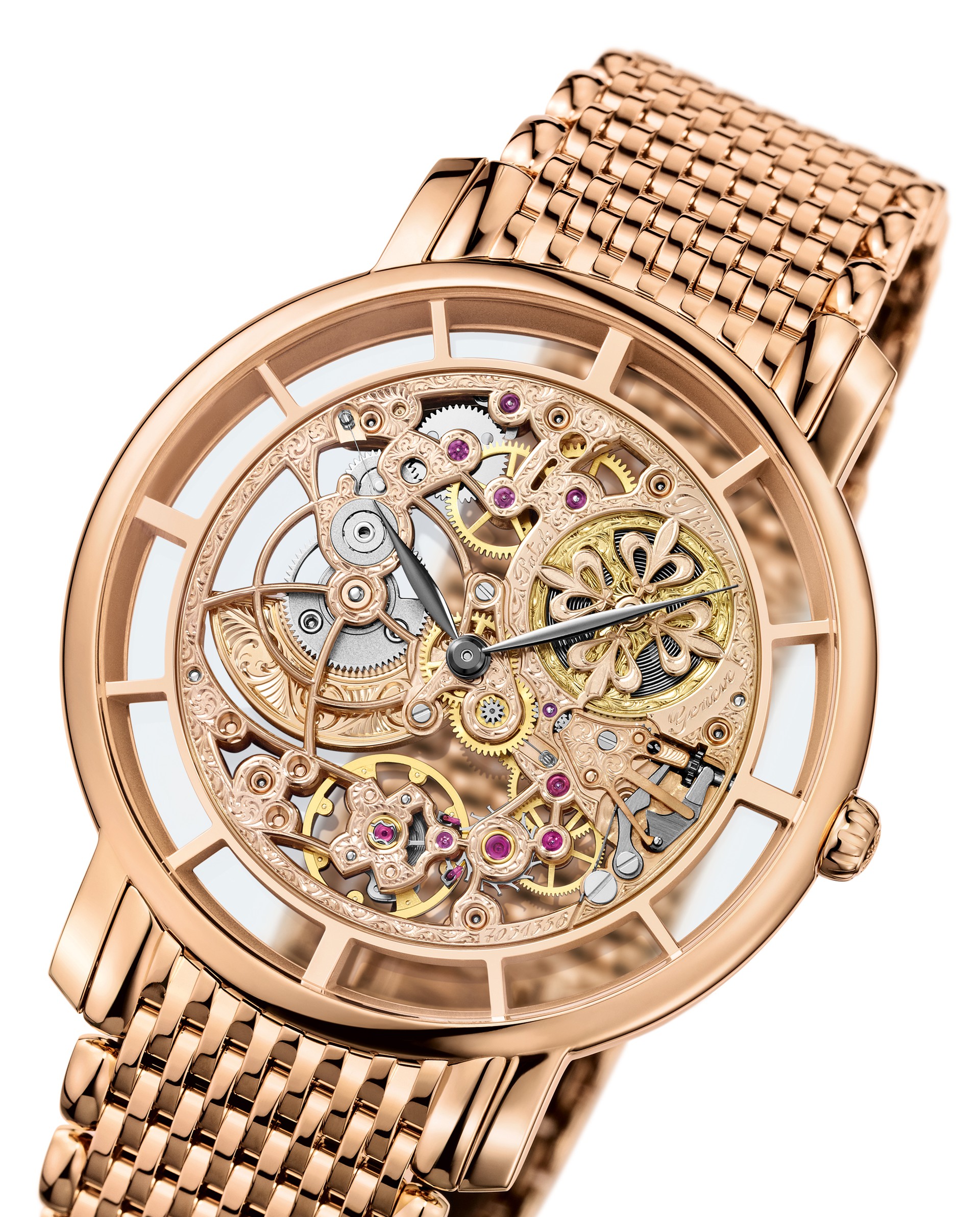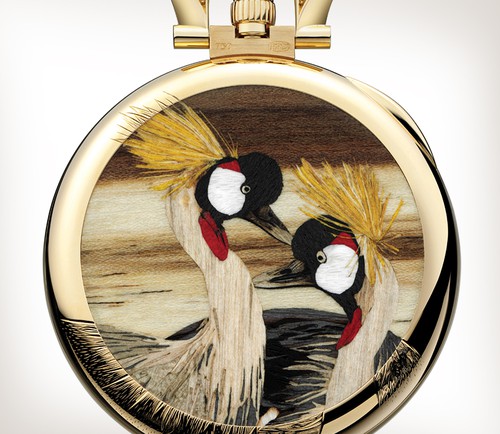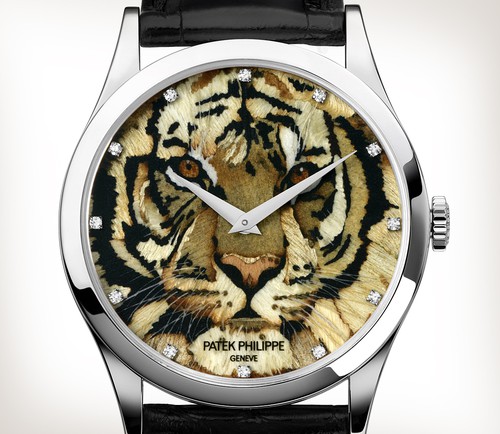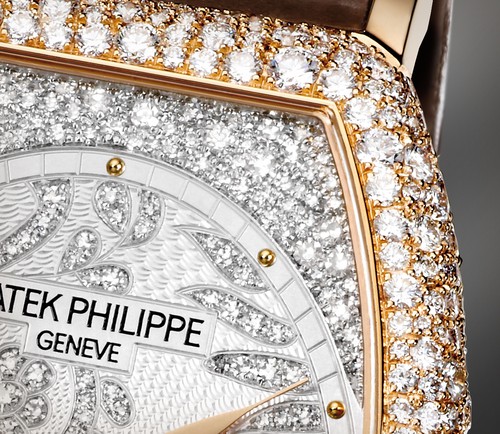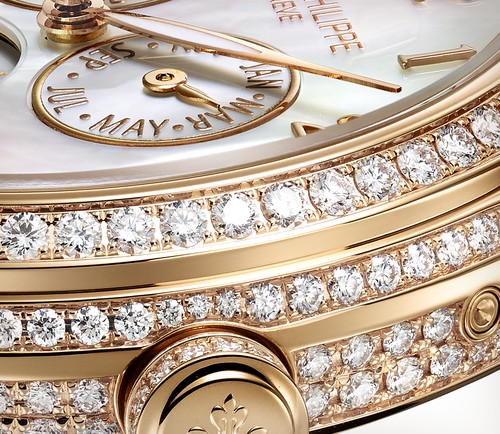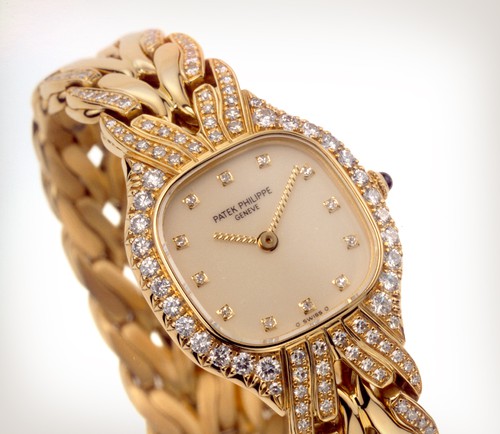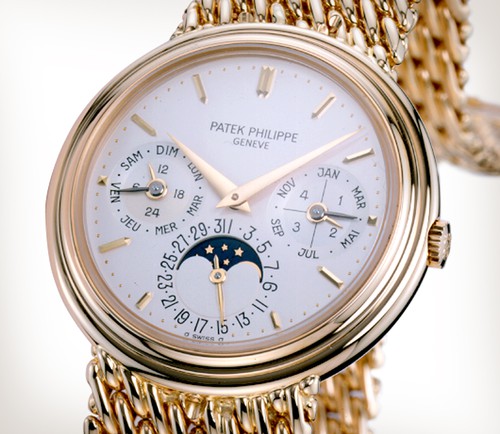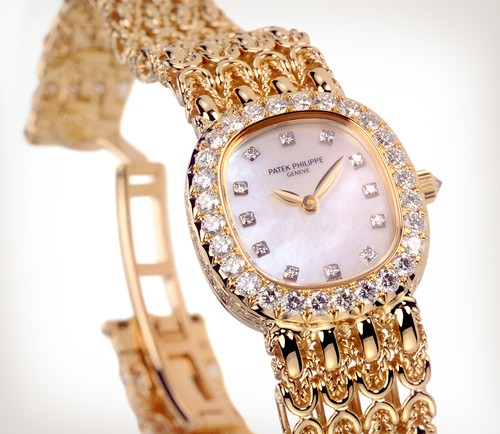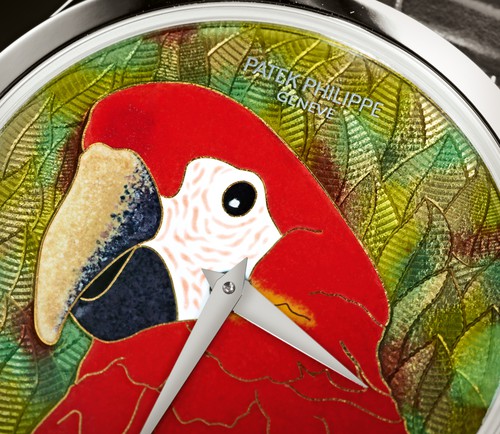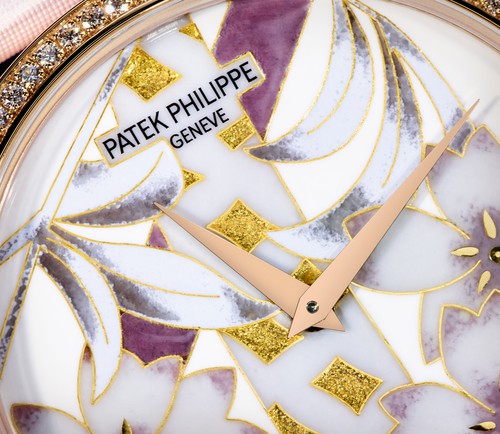3 - The crafts
Six videos introduce and explore the work of individual specialist crafts: marquetry, gem-setting, guilloché, chainsmithery, enameling, and engraving.
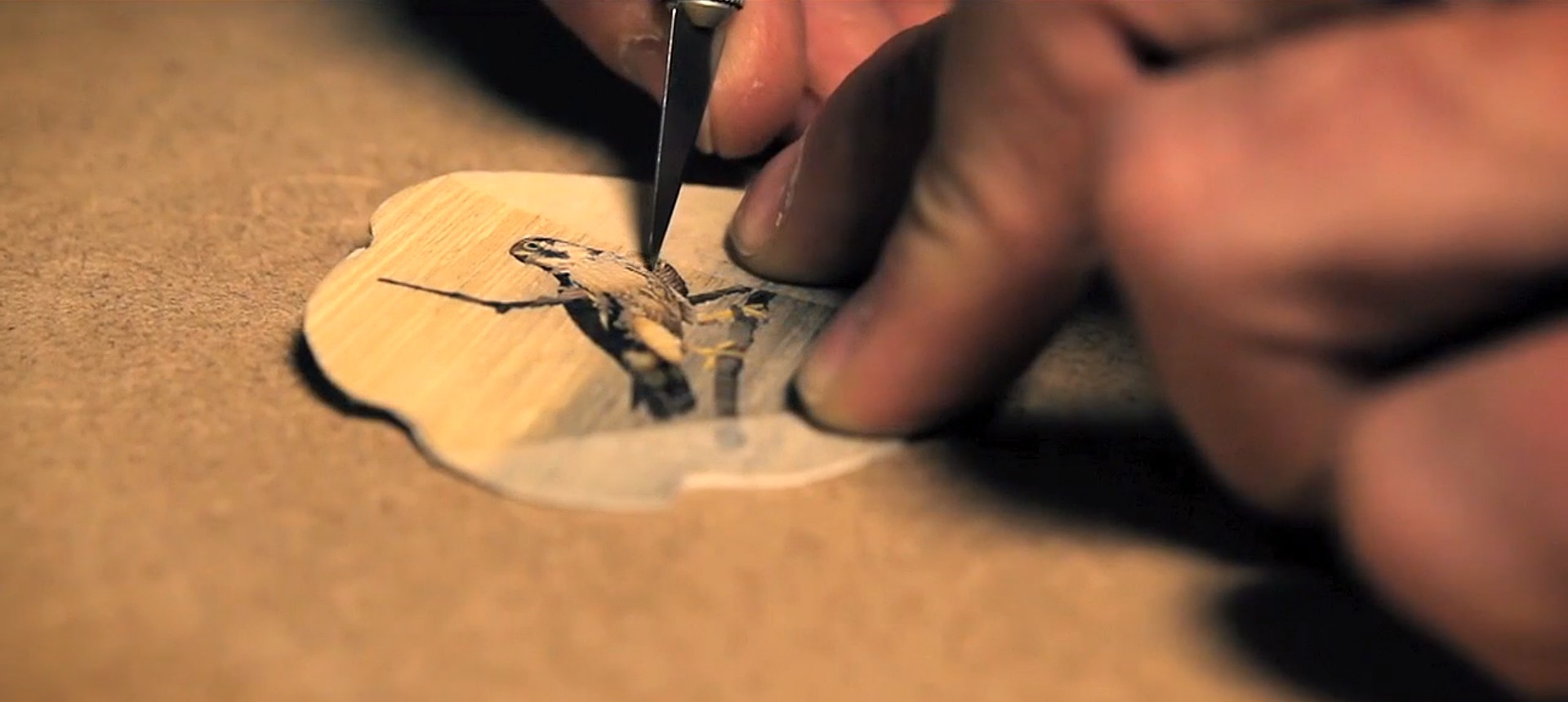
A miniaturist marquetry-maker is particularly deft, methodical, painstaking, and precise; he reads in the grain of the wood exactly what he will do with each tiny shape cut from that original leaf-thin veneer
Marquetry is a decorative technique used traditionally on furniture, smaller wooden objects and pictorial panels, and is a relatively recent arrival in the watchmaking world. To adorn an object or create a work of art on a panel, the marquetry-maker uses a choice of different woods in a wide variety of colors, which he cuts, assembles and applies according to his inspiration and the motifs chosen or imposed. When the decoration is geometric, the correct term is “parquetry”; but in either case it may be abstract or figurative, and its creator will have access to a vast palette of shades, which he combines according to his taste. He may work with up to 130 wood types, selecting from up to 60 or 70 natural tints, not counting the woods that he has stained in advance. The principle is always to cut the veneers according to a drawing and glue them to a base.
The history of marquetry
Marquetry has its origins in Ancient Greece, where wooden objects were inlaid with different materials. The practice fell out of favor at the time of the Roman Empire and then re-emerged in Italy during the Middle Ages. It blossomed in the seventeenth and eighteenth centuries, particularly in France in the work of André-Charles Boulle. This celebrated cabinetmaker developed a technique that is still in use today, although it came close to extinction in the twentieth century. It consists of stacking sheets of veneer into blocks, which are then cut with a fretsaw or a marquetry-cutter’s chevalet – a sawbuck incorporating a saw with a very fine blade.
The assembled pieces are stuck down with hot glue and pressed. To achieve additional shading and a sense of depth, along with the right thickness and a perfectly even surface, several veneers may be superimposed. Finally, the composition is carefully sanded down.
The technique is identical regardless of the scale and nature of the object: furniture, pictures, clock cases, or, more recently, tiny pieces such as pocket watches and wristwatches.
Patek Philippe’s first marquetry-maker
Patek Philippe pioneered this new type of marquetry for watch dials somewhat by chance. The company had commissioned a presentation box for a customer from an exceptionally gifted marquetry-maker. Enchanted with the result, it suggested he try his hand on a miniature scale. The craftsman rose to the challenge – the first instance of a watch being decorated with marquetry – with the Black Crowned Cranes of Kenya pocket watch, Ref. 982/115 in 2008, followed by the Royal Tiger wristwatch, Ref. 5077P two years later. A new craft was born, and has continued to delight watch-lovers ever since. Its future looks equally bright, provided that other artisans receive training, as only a handful of marquetry-makers work in watchmaking today. We refer here only to wood marquetry, since what matters most to Patek Philippe is that the creation should withstand the test of time.
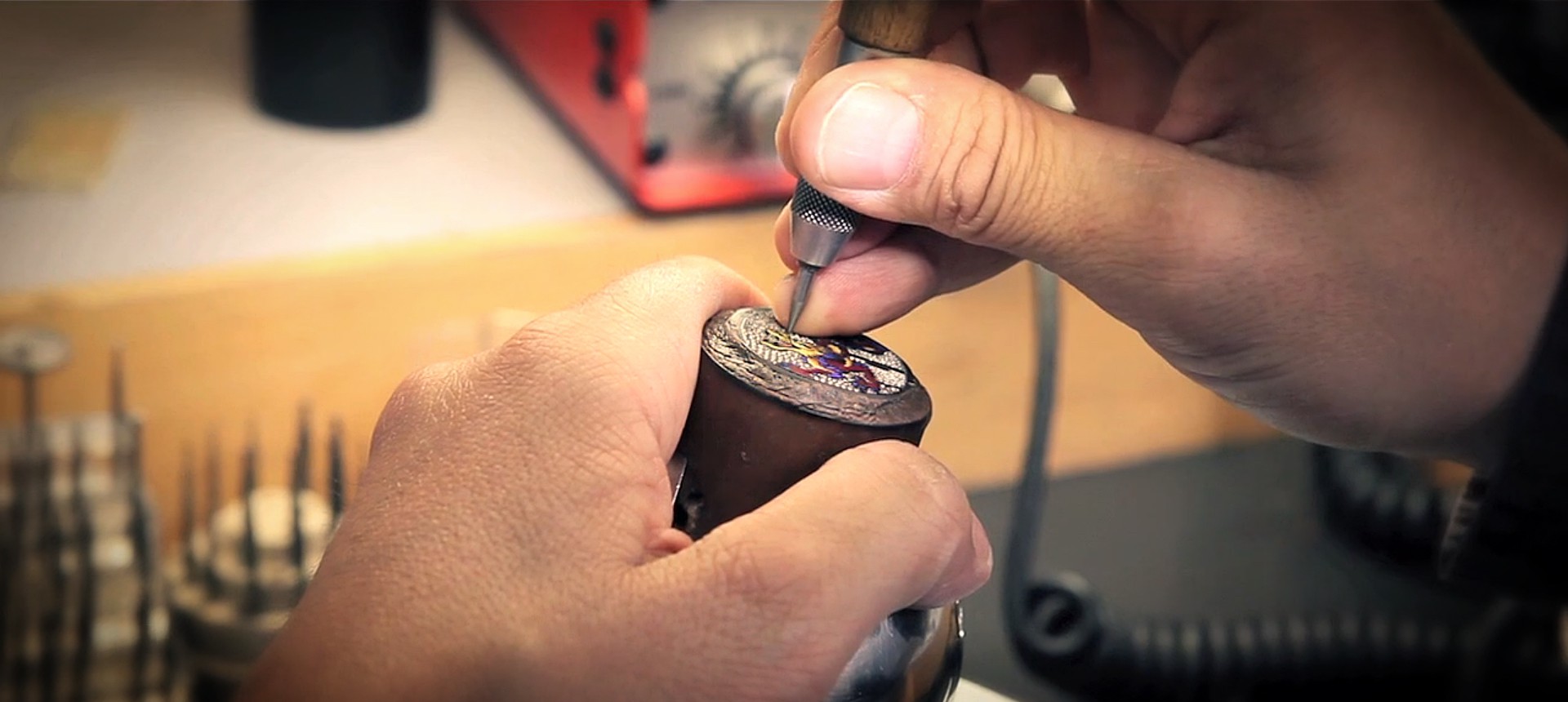
Where watchmaking meets haute joaillerie, gemsetting is a delicate art that requires nerves of steel
Watchmakers have always worked closely with jewelers; especially as, in the past, many of them came to watchmaking from the jewelry trade. The practice of decorating watchcases by setting them with precious stones, particularly diamonds, gradually spread to embrace every part of the watch, from bracelet to dial, including the lugs, case, and bezel.
Setting before gem
When the gemsetter receives a piece for work, for most techniques the ground has already been prepared. Each stone’s place has been defined and marked out, and guide holes have been drilled, though of smaller diameter than the stones will require in the end. For watches in regular production, this preparatory work, known by the French term mitraillage, is usually performed by machine using a precision tool. That is clearly not the case for one-off creations and certain jeweled watches in which craftsmanship attains the level of high art.
By making a depression with a ball burr, the gemsetter prepares the bed for the stone. He then works the metal with his graver, raising it into beads or grains. These tiny amounts of metal will hold the stone firmly in place. When the stone is positioned, the grain is split, and the separated sections grip the adjacent stone on either side. Lastly, the grain is rounded, polished, and any rough edges smoothed. This is a classic setting for diamonds. But Patek Philippe’s artisans also employ other techniques for setting precious gems.
Gemsetting techniques
Snow setting, or random setting , offers the gemsetter the greatest freedom of expression. It achieves its effect with stones of ten or 20 different sizes. The setter works with a batch of stones prepared by a gemologist and seeks to create a harmonious composition with the minimum metal visible between the stones. Nevertheless, each gem must be secured by two or three grains at least. The setter creates his pattern of holes either as he goes along, or all at once, but without a preliminary drawing, giving free rein to his taste and inspiration.
Another technique is known as invisible setting . Here, the stones are specially prepared by the diamond-cutter, with a horizontal groove that enables them to be slid onto a gold rail. In this way, they are clamped together, aided by the flexibility of the metal. This technique calls for extreme precision, as once the stones are in place, they can no longer be removed.
The invisible or mystery setting is equally appropriate for baguette diamonds and colored precious stones – ruby, sapphire, or emerald. It is delicate work, since the angles of the baguette cut, 90° or less, make the stone fragile. The experienced craftsman knows how to avoid the treacherous and costly pitfalls.
Pavé grain and grain settings : a row of diamonds can transform a watch by adding a precious yet discreetly luxurious touch. The gemsetter uses a highly precise form of grain setting peculiar to Patek Philippe, to ensure that each diamond is securely held in place with small hand-formed grains of gold that are barely visible to the eye. Using the minimum amount of metal and precise spacing and alignment of the diamonds, the result is smooth to the touch and ensures a harmonious look and bright sparkle.
The Patek Philippe Seal
The company’s quality benchmark is designed to guarantee the enduring integrity of Patek Philippe watches. Under the Seal, diamonds must comply with strict quality criteria. They need to be internally flawless, conform to the Top Wesselton color specifications and display an immaculate cut. Only the right proportions, impeccable symmetry, and perfect faceting will bring out the true brilliance of diamonds.
Indeed, all precious stones should be set vertically, axially parallel and in the same height. Each stone must be securely set, in line with the master jeweler’s art and never adhesively bonded. A conflict-free certificate is also required for all diamonds.
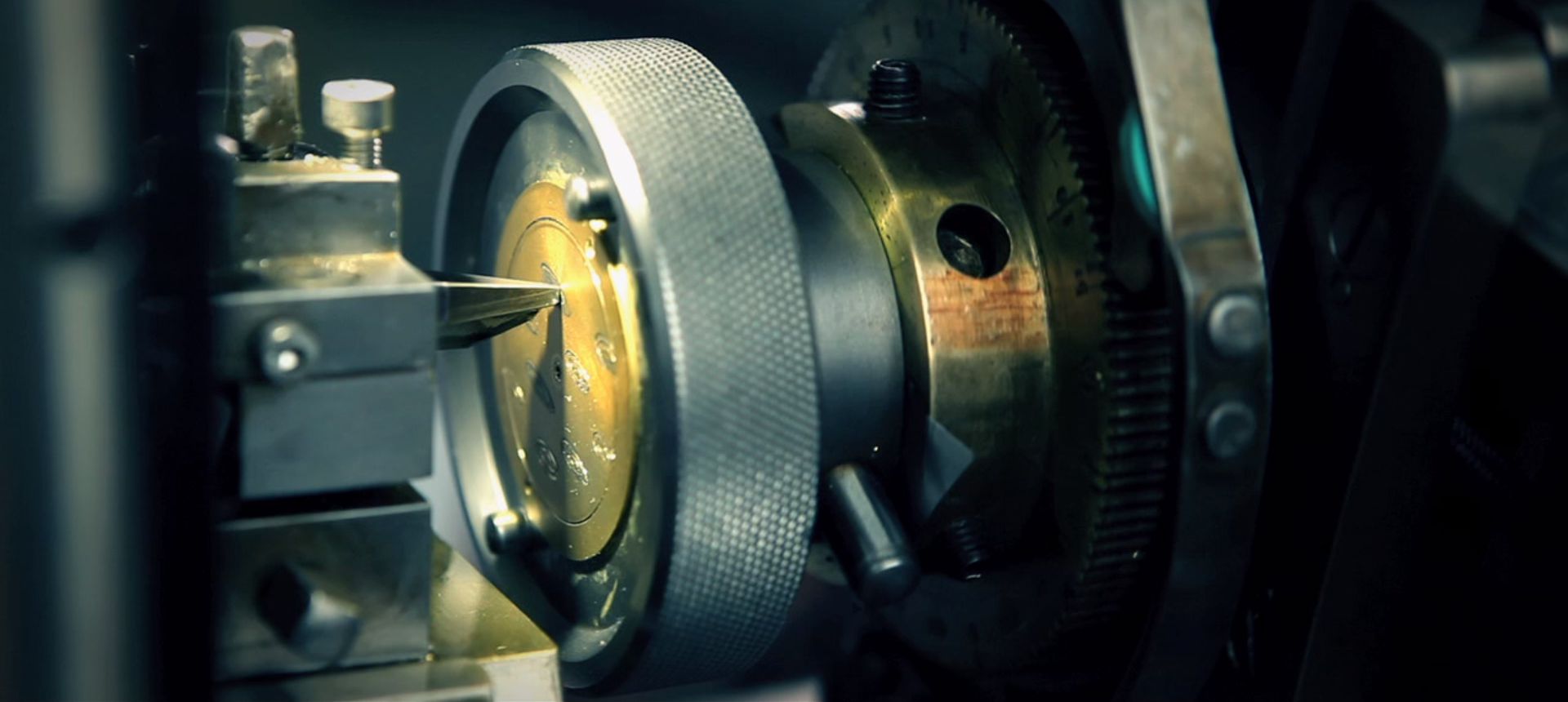
An ancient machine, operated by hand, creates beautiful engraved patterns on dials, movements, cases, and bracelets
Guilloché work, or engine-turning as it’s sometimes known, is a form of mechanized decoration. Over the centuries, guillocheurs have used many different types of hand-operated lathe, adapting them to suit the task or to give fuller expression to their artistry and technique. By turning two crankhandles simultaneously, the idea is to guide the cutting tool so that it carves fine grooves into a metal surface in repetitive geometric patterns. There are two main types of lathe: the so-called straight line engine and the rose engine.
The first, as its name suggests, is used to cut straight lines that may intersect at any angle: for example, at 90° for the “hobnail” or clous de Paris pattern. One hand moves the cutter horizontally toward the piece to be decorated, which is placed facing it, while the other hand activates the cutter vertically.
More widely known and used, the rose engine offers an infinitely richer variety of eye-catching patterns, as it can produce curved lines. The lathe is fitted with cams, appropriately called rosettes. With one hand, the engine-turner maintains the rotation; with the other he operates the cutter with the greatest precision.
In Switzerland, the guillocheur’s craft once came close to disappearing, along with the few artisans who still knew how to use the ancient machines. Fortunately, in the late 1990s, the remaining specialists managed to pass on their knowledge and at just the right time. It was a period of surging demand for these fine decorations, with their kaleidoscopic play of interlacing lines and curves, and repetitive geometric patterns. They appeared on watchcases, bracelets, occupied dials, and even found their way into movements, where they began to be displayed through sapphire crystal covers. Today, the guilloché skill is no longer formally taught, merely passed on from artisan to artisan.
The rose engine and the artist
A guillocheur must know his machine by heart, as the instructions for use were last seen two centuries ago. The choice of decoration depends on the shape of the piece to be worked – in other words whether it is a caseback, a bracelet, a portion of the dial, or an oscillating weight. The guillocheur must constantly step back and see the piece as a whole, and then plunge into the detail using his binocular microscope, the twenty-first-century complement to a two-hundred-year-old machine.
The guillocheur works at a constant speed. To create a dial of pyramids, the edges of which measure 0.01 mm, with a pattern that will appear as tiny raised dots, he must be able to ensure that each repeat of the motif never diverges from that scale.
The origins and future of guilloché
Dating back to the sixteenth century, guilloché thrived in watchmaking throughout the nineteenth century. However, these strange machine tools almost ended up on the scrapheap in the late twentieth century, and scarcely had they returned to favor when a new rival emerged, the laser engraver. Was the guillocheur’s craft, saved in extremis, under threat again? The answer came loud and clear from the Patek Philippe workshops, where fine craftsmanship always takes priority.
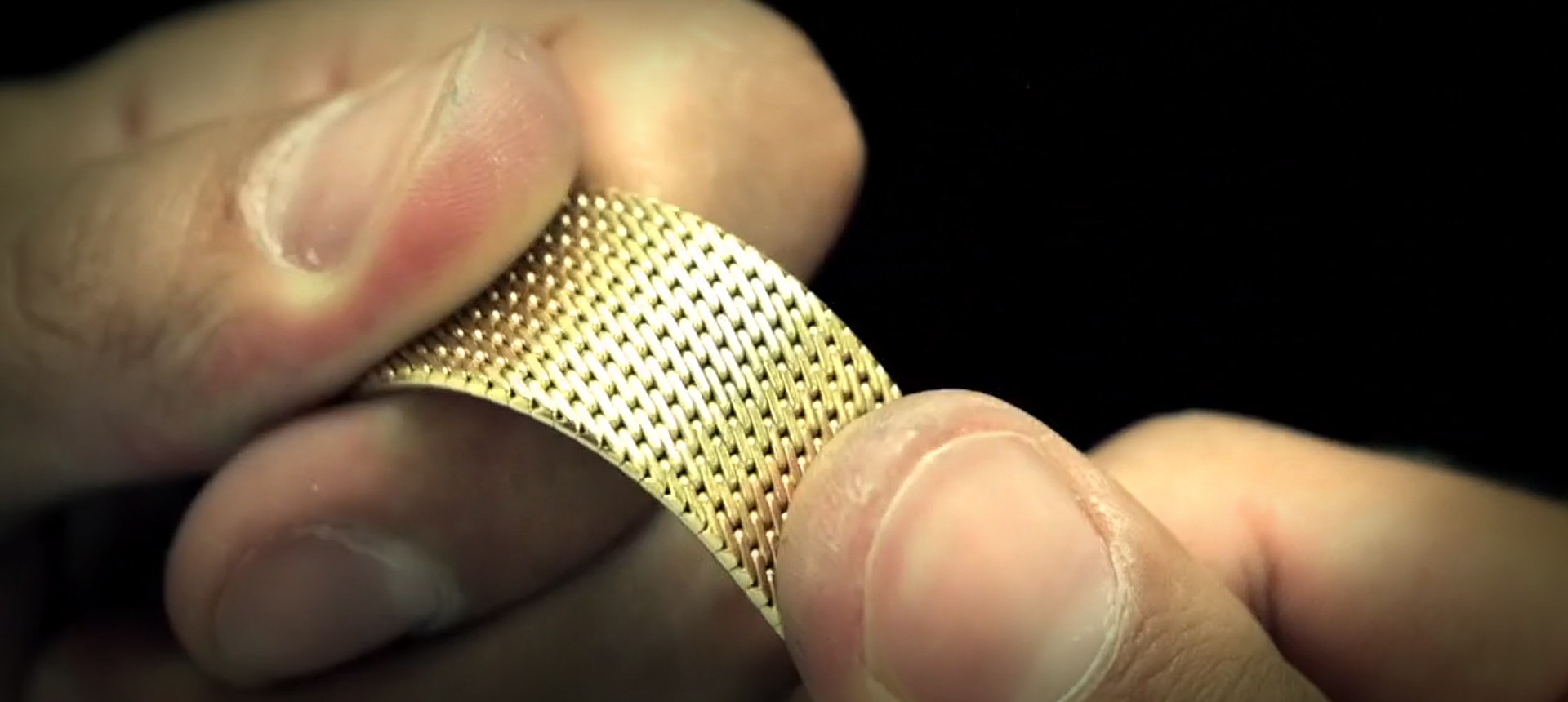
Chain bracelets go in and out of fashion. But at Patek Philippe, the passion for creating and caring for them has never waned
Chain bracelets had their time in the sun; but beyond the simplest, such as a curb chain, they are complex to produce and consequently challenging to resize or repair. It is a struggle to find a retailer today who can adjust or repair a chain bracelet, so it’s fortunate that Patek Philippe upholds its commitment to their service and repair.
The making of a chain bracelet
Considering that each link of the most intricate bracelet is individually handmade, positioned, aligned, assembled, and soldered, it is no wonder that it takes some time to create one. The dexterity and expertise of the chainsmith at work is fascinating to see. He begins with almost nothing – just a simple gold wire.
The first step is to make this wire the required diameter by pulling it through a drawplate, having coated it with beeswax to facilitate the task. Next, the wire is wound round a circular, oval or elliptical mandrel in copper or steel. It must be very tightly and evenly wrapped round this tube to ensure the uniformity of the links obtained by cutting each coil. A sheet of paper, placed between the mandrel and the wire, helps create a degree of clearance for when the coil is taken off the mandrel – the paper is burned away with a blowlamp before the coil is removed.
Chain styles and techniques
The first link is closed and soldered. The next one is attached to it before being closed and soldered in its turn. This is repeated, link by link, always by hand. When the links are simply inserted one in the other, the result is a basic curb chain. But here, as in knitting, the patterns can become more complex. The chaîne anglaise, for instance, is composed of two interlacing curb chains. And so on, from the simplest to the most intricate styles. The chain bracelet undoubtedly reaches the height of its beauty in the La Flamme, Ref. 4815/1 bracelet unique to Patek Philippe, created with two chaînes anglaises.
The chaîne milanaise, meanwhile, is an intricate mesh of fine links interwoven to create a flexible, even fabric-like bracelet. The technique, which originated in the chain-mail of the Middle Ages, is showcased in the Men’s Complicated watch, Ref. 3945/1 , an example of the exquisite bracelets crafted from the 1970s to 1990s by Patek Philippe.
But whatever the style, the chain must be minutely adjusted before being subjected to a 33-ton press. Next, the intersections are kneaded by hand, to achieve flexibility, and the chain is shaped on the roller. The chainsmith then fashions the rack-and-pinion clasp and adjusts it.
Of all the chainsmith’s tools – which include a battery of files – the one each apprentice must really make his own is the broad-nose pliers that play a crucial role in closing and soldering each link.
The rack-and-pinion clasp offers about 4 or 5 mm leeway in the length of the chain bracelet. However, while it can be shortened by cutting, it cannot be lengthened: it is impossible to add new links to those that have been flattened under the press as part of the process of creating the bracelet. The chain bracelet is made to measure, and if its owner’s wrist grows larger with time, as is often the case, a new bracelet will be made, again to measure.
In more recent chain bracelets, such as the Patek Philippe chain bracelet used for the Ladies’ Golden Ellipse, Ref. 4931/2 , setting links on each side of the clasp were introduced to allow easy adjustment.
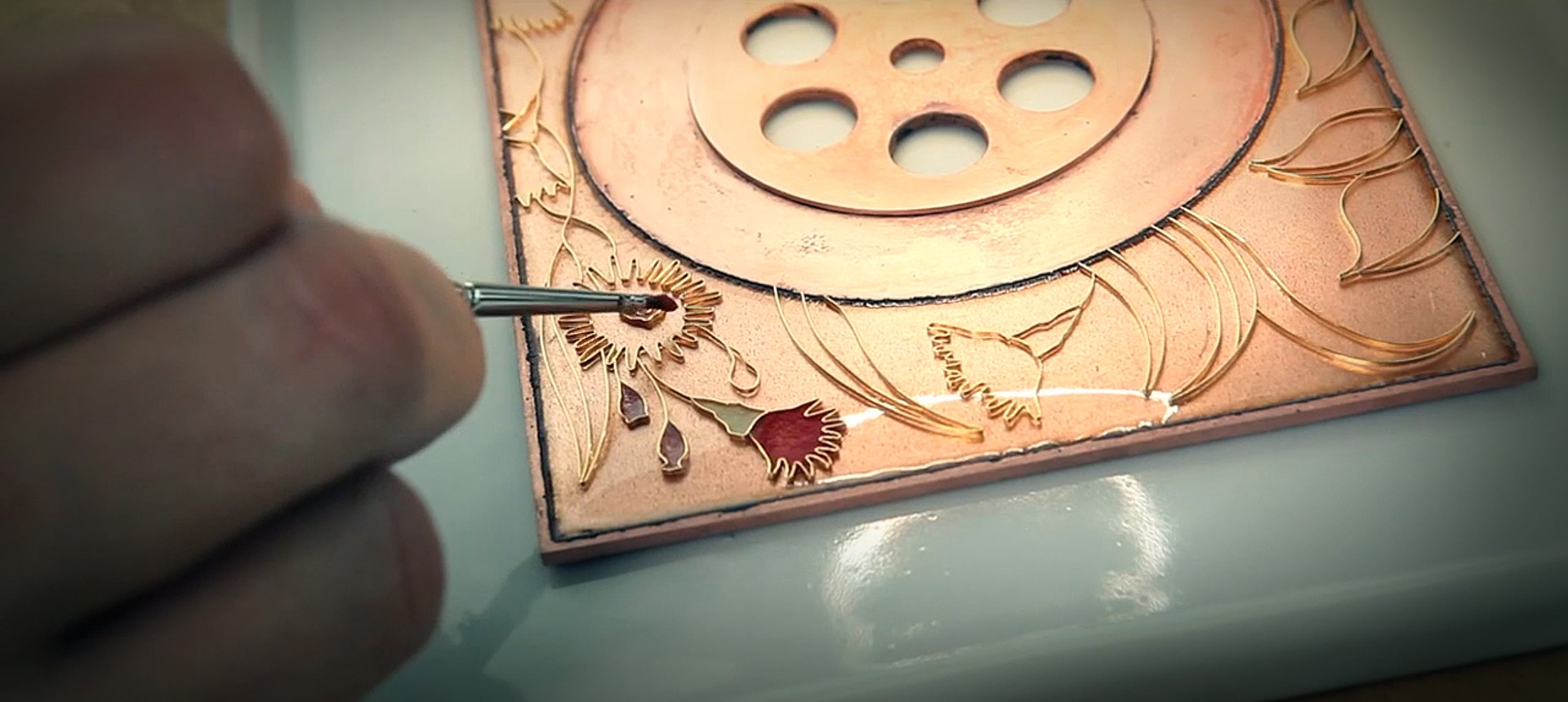
From the seventeenth century onwards, enamelers’ skills were much in demand to adorn watchcases and decorate dials. Today, it’s an endangered craft – but not at Patek Philippe.
Enamel is a vitreous substance based on silica sand. It is transparent (known as fondant) and may be colored by adding metal oxides. Crushed to a fine powder and washed repeatedly, it is mixed with water to make a paste. After the surface of an object is meticulously prepared and a base coat added, the paste is applied to the areas to be enameled. Once dry, this paste is fired in a kiln at temperatures exceeding 800°C, fusing to the metal base and becoming extremely hard and stable. Depending on the intricacy of the design, a model can return to the kiln up to 12 times.
Enameling was fashionable in the Byzantine era and came to full flower at the end of the Middle Ages, particularly in regions where porcelain was made. But the technique has remained in use to the present day, especially in watchmaking.
The enameler’s techniques
The enameler uses one of four traditional techniques, or perhaps a combination; but rare is she – in the watchmaking world, most enamelers are women – who masters them all.
cloisonné technique , a fine wire, usually gold, measuring less than 0.5 mm in diameter, is bent to form a design and fixed to a base plate coated with a ground layer of enamel. After the first firing, the cells formed by the wire partitions are filled with selected enamels. According to the type of enamel, the colours and the desired effect, several successive firings may be needed. With each firing, details are fine-tuned, colors evolve, and the final effect is enhanced, the play of transparency and depth intensified.
The second technique, champlevé enameling , is quite similar. The process is the same as regards filling the cells with enamel, but the base is engraved beforehand. This may be done mechanically for pieces produced in series, and for simple decorations on a flat surface or a basic shape. But when something more intricate is required, as is always the case with Patek Philippe’s one-off creations, this operation must be performed by hand. The enameler fills in the cells and colors them in all the desired shades.
The third technique is paillonné enameling , featuring a host of tiny pieces of gold leaf cut out in various forms. These little spangles, called paillons, are then embedded in layers of transparent enamel.
The fourth, and rarest, technique is miniature painting on enamel , which is distinct from the rest. In fact, it could be seen as another craft entirely. From the outset, the enamel is worked differently, being mixed with oil rather than water. It is then applied with a very fine brush on a ground layer of enamel. In this way, as demonstrated magnificently at Patek Philippe, great works of art can be reproduced in miniature form, as can expressive portraits, landscapes, and crowd scenes.
Preserving a Genevan speciality
The four techniques may be used together in a single piece, and this has already been seen. The enamels mix well, achieving extraordinarily subtle shades, like those of a watercolor. All these procedures require time and patience given the number of steps involved, and each trip to the kiln is a litmus test. A speck of dust, a sudden draft, a knock at the umpteenth firing, and one must start all over again. The risk is ever-present. Hence the enameler’s smile of satisfaction and pride once a piece is completed.
Historically, painting on enamel has always been a Genevan specialty, and Patek Philippe has decisively contributed to its preservation. Yet today, of all the fine crafts, this is the one at greatest risk in terms of its transference to future generations. At the level achieved by the artist-craftsmen who built its reputation, it calls for an expertise that can only be acquired through years of training and practice. It also requires artistic intuition and talent, and these cannot be taught.
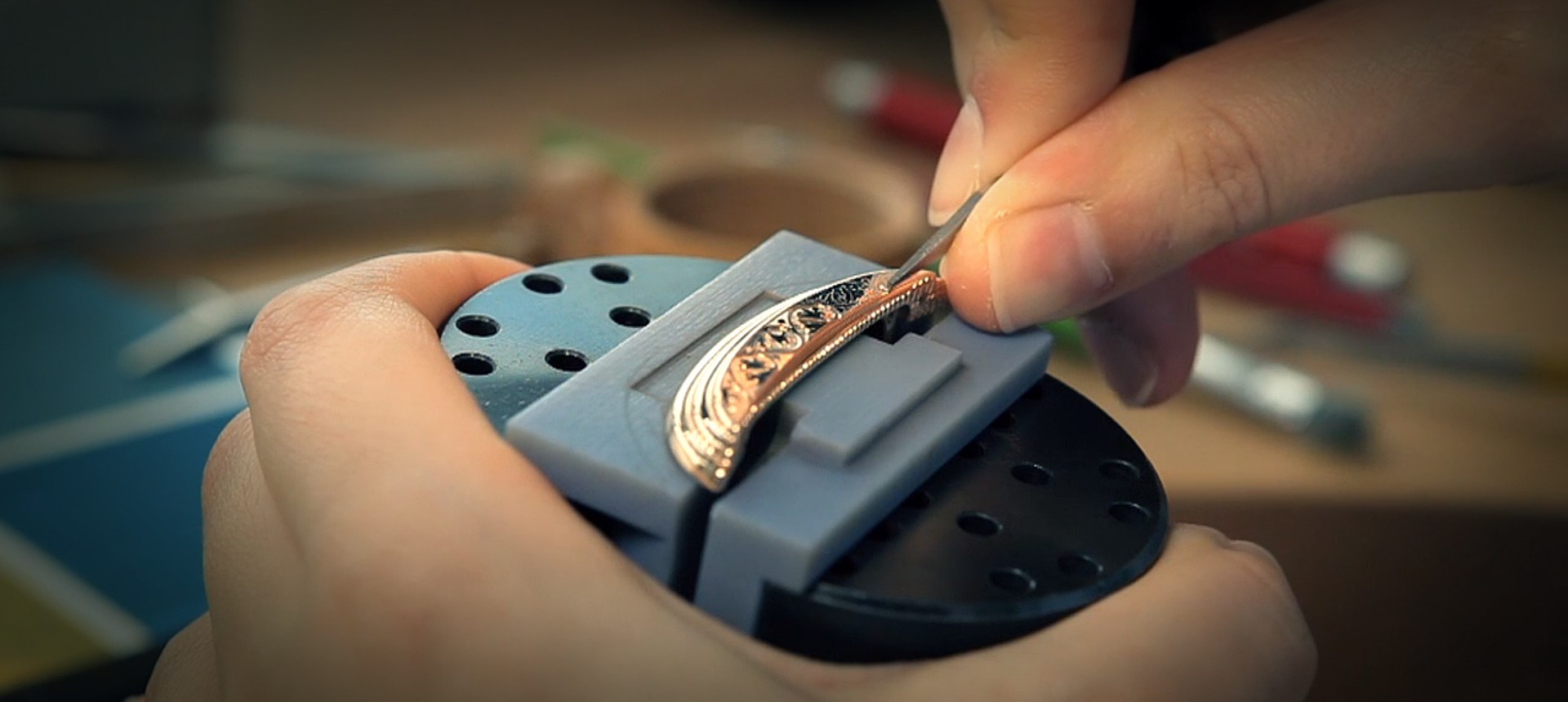
An inimitable skill that creates neat, shining lines and a subtle play of light, engraving is inspired art upon a difficult metal canvas
The engraver’s first tool is...the pencil. Of course, we instinctively think of the burin (or graver as it’s also known), or one of the array of burins placed close at hand; any observer at the workbench is struck by their number and variety. The burin is an almost natural extension of this artist’s hand, as a fountain pen is for a writer. Pointed, squared, or rounded, but always sharpened, this tool penetrates the material to gouge out tiny quantities, tracing a line or curve with a furrow of varying depth.
The art of the engraver
But before beginning to engrave a new piece, unique in so many ways, the artist-craftsman sketches his subject and all the motifs that it will comprise. Whether the subject is a miniature reproduction or an original work, a personal creation or a concept based on a drawing provided by a designer, the next step is to transfer all the burin’s guiding lines to the metal surface in dry-point.
The path traced by the burin based on this sketch requires perfect coordination between the engraver’s hands. One hand pushes the burin onto the metal; the other holds the metal by means of a spherical instrument, the engraver’s ball, which clamps and rotates the piece into the best position as work proceeds. In watchmaking, as in the jewelery world, the engraver works with a binocular microscope, at a scale that requires extreme concentration.
Inspired variety of engravings
Every engraver has his own personality, and develops his own recognizable style. The basic decorations often center on patterns of interlacing arabesques and spiral scrolls, but these artists master many other motifs as well. Inspired by a specific commission or by pure imagination, an endless variety of scenes takes shape beneath each burin.
Engraving may be intaglio, relief, or sculpted. Relief engraving is known as “chasing” when the background material is removed with a chisel. One of the most spectacular expressions of the use of engraving in horology, in which several craftsmen work to highlight each other’s talents, is undoubtedly the engraving of a skeleton movement. The Patek Philippe Skeleton watch Ref. 5180 is a wonderful example of this high-risk undertaking, demanding extraordinary dexterity.
More than two hundred engravers were working in Geneva in the late eighteenth century, but their craft almost disappeared between 1970 and 1980. Fortunately, Patek Philippe, which had given work to these artisans from the outset, continued to do so when decorated watches were no longer in fashion, keeping this precious knowledge alive. And today, having survived by a whisker, hand engraving is in demand. Connoisseurs admire it and even though the great craftsmen are in short supply, the survival of the next generation of engravers seems assured.
